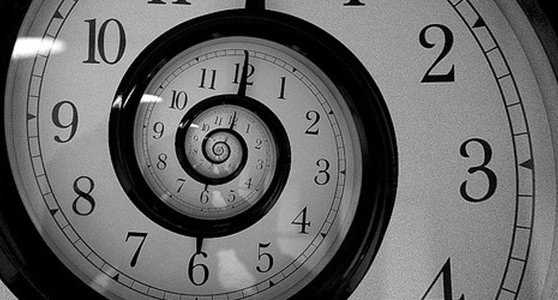Einstein And Relativity Are Revered
Albert Einstein is a revered icon of science and a symbol of genius. Time Magazine named him, not just Person of Year, but Person of the 20th Century. Einstein’s Theory of Relativity is often touted as the “greatest achievement in physics”. It would seem to take a lot of chutzpah to contradict Einstein on any topic, but to challenge him regarding relativity would seem to be going beyond all rational bounds!
But Relativity Is Wrong
Yet, it’s extremely simple to show how Professor Herbert Dingle “re-discovered” the problem with special relativity that was seen by earlier physics professors. Even I, quite independently, “re-discovered” this glaring flaw on my own. As Professor Dingle put it, special relativity “unavoidably requires that (clock) A works more slowly than (clock) B and (clock) B more slowly than (clock) A – which it requires no super-intelligence to see is impossible”. Dingle and the other physicists referenced above were all extremely highly regarded physicists, and even one time relativists. However, when these extremely highly regarded physicists dared to criticize relativity, they were immediately labelled as quacks and basically ignored by physics academia.
If you’d like to truly understand special relativity more deeply than most physics professors, read on.
A Conceptual Problem
Special relativity requires equality and complete symmetry between all inertial observers and between all their clocks, including observer/clock A and observer/clock B. Hence, in special relativity, there are no special or preferred inertial frames or observers or clocks. Among other things, that means that the clocks in all inertial frames must all have the same rate. Otherwise, the frames could be ordered by clock rate and there would be one or more clocks with the fastest rate and that would violate the Principle of Relativity that special relativity was founded on. However, the empirical data show that clock rate physically varies due to changes in velocity. The empirical data is at odds with the foundations, assumptions and specifics of relativity!
A Deeper, More Detailed Look At The Problem
To see the problem more clearly, we will take a conceptual look at special relativity’s time dilation equation. It’s shown below, and it will give us deeper insight, but we’ll still just discuss it conceptually.
![]()
Basically, the equation relates the observer’s own clock rate to the clock rate of a clock that is moving with respect to that observer. The “moving” clock is alleged by special relativity to be affected by Time Dilation such that any moving clock is observed to be moving slower than the observer’s own clock.
There are two possible ways to interpret special relativity’s time dilation equation shown above, namely:
Interpretation 1: The “moving” observed clock is “just observed” to be accumulating time at a slower rate than the observer’s own clock. BUT a “just observed” effect means that there is NO real physical slowing of the moving clock’s rate. However, tons of empirical data, including from GPS, show that “moving” clocks’ rates do physically slow down. Hence, this interpretation has been disproved by the empirical data..
Interpretation 2: The “moving” clock’s rate is physically slower than the observer’s clock’s rate. However, if we use this interpretation consistently for Observer A and for Observer B, who are moving with respect to each other, then we see this interpretation of special relativity leads to a glaring contradiction.
If Observer A’s uses special relativity (Interpretation #2), then special relativity tells him that Observer B’s clock’s rate is physically slower than his own clock’s rate. However, if Observer B’s uses special relativity (Interpretation #2), then special relativity tells him that Observer A’s clock’s rate is physically slower than his own clock’s rate.!!! See Prof. Dingle’s quote above, near the beginning of this article!..
In addition, this interpretation of special relativity’s time dilation equation is dramatically at odds with the empirical data, including GPS data.
Even Deeper Insight
Looking at special relativity’s time dilation equation above, we note that the time dilation effect is a function of the RELATIVE velocity squared. But the relative velocity squared is the same for A to B as for B to A. Hence, for “Interpretation 2” of special relativity above, when we claim that B’s clock rate is slower than A’s clock rate, then, to CONSISTENTLY apply special relativity, we MUST also say that A’s clock rate is slower than B’s clock rate. So again, Dingle’s observation about special relativity is confirmed!
“Moving” Clocks Do Run Slow, But
“Moving” clocks do run slow, BUT in a quite different way than special relativity’s time dilation equation predicts. GPS shows that clock rates slow as their absolute (NOT relative) velocity increases. This will be discussed in a later article in this series.
Other Articles In This Series
The topics of latter articles in this series on special relativity are:










